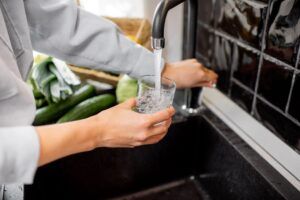Chlorine isn’t just present in swimming pools. Many people may not know that municipal water treatment facilities often use chlorine as a means of cleaning out pathogens from local and community water supplies. Although it works as an effective disinfectant for shared wading and drinking water supplies, chlorine has an unpleasant pungent odour.
Plus, overexposure or overconsumption of chlorine can also have adverse physical and health effects.
If you’re worried about the impact chlorine consumption and exposure may be having on your health or your family’s health, keep reading for some great tips on how to remove chlorine in drinking water.

